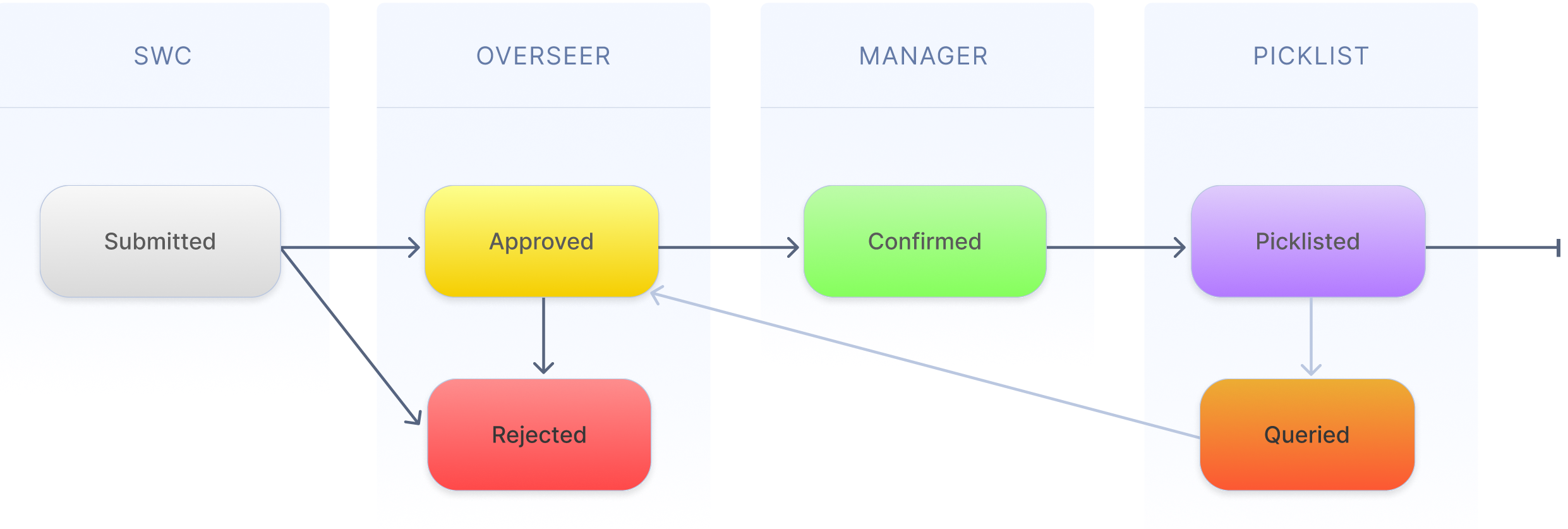Telecoms Kit Request and Approval - [short version]
Challenge
BT, a large UK telecoms business, needed a system to handle requests (Call Offs) for cell tower parts by their national network of cell tower installation companies. This formed the first step in a chain of processes and systems, so had to capture all relevant information and communicate this to all users as well as to other computer systems.
There are around 2000 Call Offs submitted each month and 400 active users, many of whom log in every day.
The journey of a Call Off
Approach
After numerous user interviews I identified a number of themes which were key to success:
Reducing user errors in Call Off submission – Many Call Offs were found to have errors meaning they were rejected and had to be resubmitted, delaying the kit being sent and wasting admin time. Therefore input validation was crucial, as well as the ability to correct mistakes after submission.
Large volumes of data – Each day there were 100+ Call Offs submitted, meaning the ability for users to filter, sort and easily scan Call Offs was imperative.
Communication and visibility – The status of Call Offs needed to be clearly visible to all, and there needed to be a limited form of two-way communication between Call Off submitter and approver, which was to replace the majority of conversations previously done over email.
The Picklist screen - which gives an overview of upcoming Call Offs to be processed
Design Decisions
The hardest design challenge of this project was allowing various different user types to interact with the same data in different ways, and yet maintaining visibility to all parties. One method I used was indicating any edits made to a call off (which would need to be immediately visible to the creator of the call off) with a red exclamation mark icon which attracted attention. A variant of this was if any parts were removed then they were red-lined as can be seen below.
Editing and removing parts
Results
Call Off rejections were reduced from 80% to 15%
A memorable comment from a user: “I can now do my actual job instead of correcting errors and getting lost in email chains”
Administration time required to process Call Offs was significantly reduced to the point where personnel could be moved to other roles in the business
Increased our revenue by 10%
Won business for a similar Call Offs system from a different large telecoms company, who’d heard about the success of this system and approached us to build one for them


